Artnet Auctions
What Made Cuban Modernism So Groundbreaking? Scholar Roberto Cobas Amate on the Rapidly Expanding Market
Famed in their day but passed over by history, the artists of Los Once and Los Diez are gaining rightful acclaim.
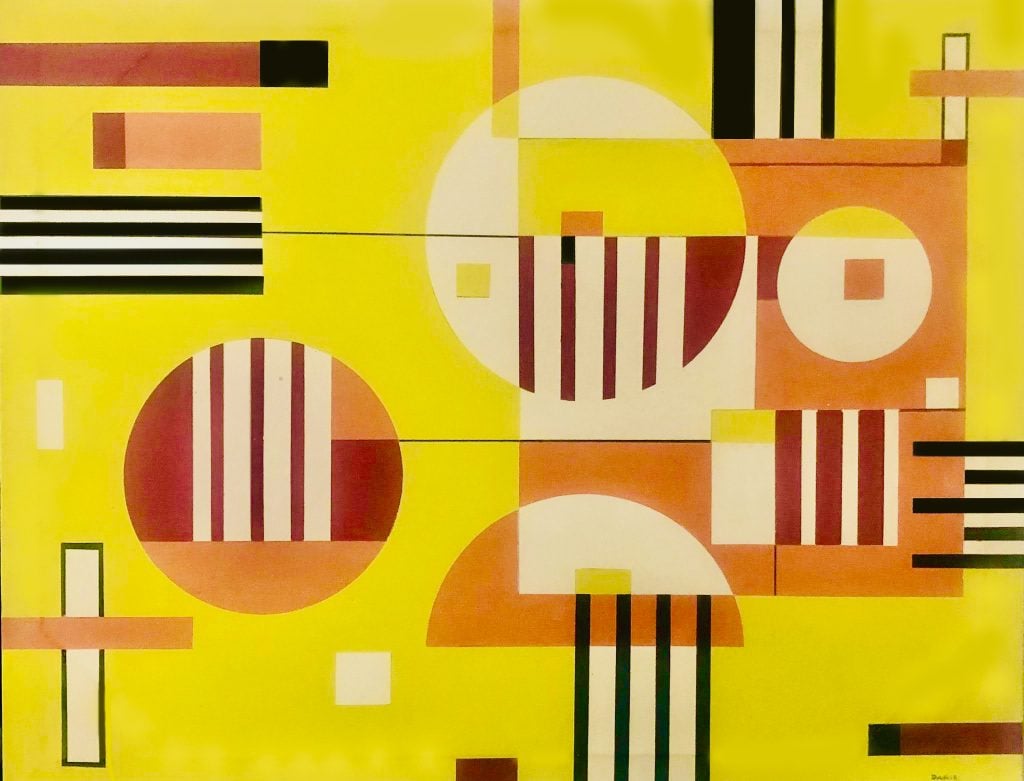
Famed in their day but passed over by history, the artists of Los Once and Los Diez are gaining rightful acclaim.

Artnet Auctions

Scroll down to read this article in Spanish.
With a new wave of exhibitions and scholarship taking place worldwide, the Cuban Modernist groups known as Los Once and Los Diez Pintores Concretos are on the cusp of much greater renown. Their foremost leaders—Wifredo Arcay, Salvador Corratgé, Sandú Darié, and Loló Soldevilla—all spent time abroad in Europe during the height of Modernist innovation; the philosophies and aesthetics that inspired them have been traced to Neoplasticism, Constructivism, Suprematism, and Post-Cubism. Recently, more institutions have been seeking pieces by artists from these movements. The curatorial mustering has tipped off collectors as well, with buyers around the globe once again or newly motivated to acquire works by Los Once and Los Diez artists. Marking the mood of the moment, a selection of museum-worthy Cuban masterpieces will be offered during All in Americas, opening on September 22. This sale, presented by Artnet Auctions in partnership with Raphael Castoriano, celebrates the American continents.
Strong provenance and documentation are particularly vital for collectors acquiring Cuban Modernism, because limited literature and a scarcity of experts who can confirm authenticity make finding works with outstanding credentials a true rarity. All in Americas provides an unparalleled opportunity to access significant, authenticated works of Cuban art.
Ahead of the auction, Artnet Auctions Specialist CJ Greenhill Caldera spoke with Roberto Cobas Amate, the renowned Cuban art scholar, authenticator, and curator of the Cuban avant-garde collection at the Museo Nacional de Bellas Artes in Havana, Cuba. His name resonates not only from the bylines of his seminal texts on Los Once y Los Diez, but also from his role as the leading authenticator of Cuban works of the period, including those in our upcoming sale.
All in Americas will be live for bidding on September 22—click here to consign works from your collection, and register for bidding here.
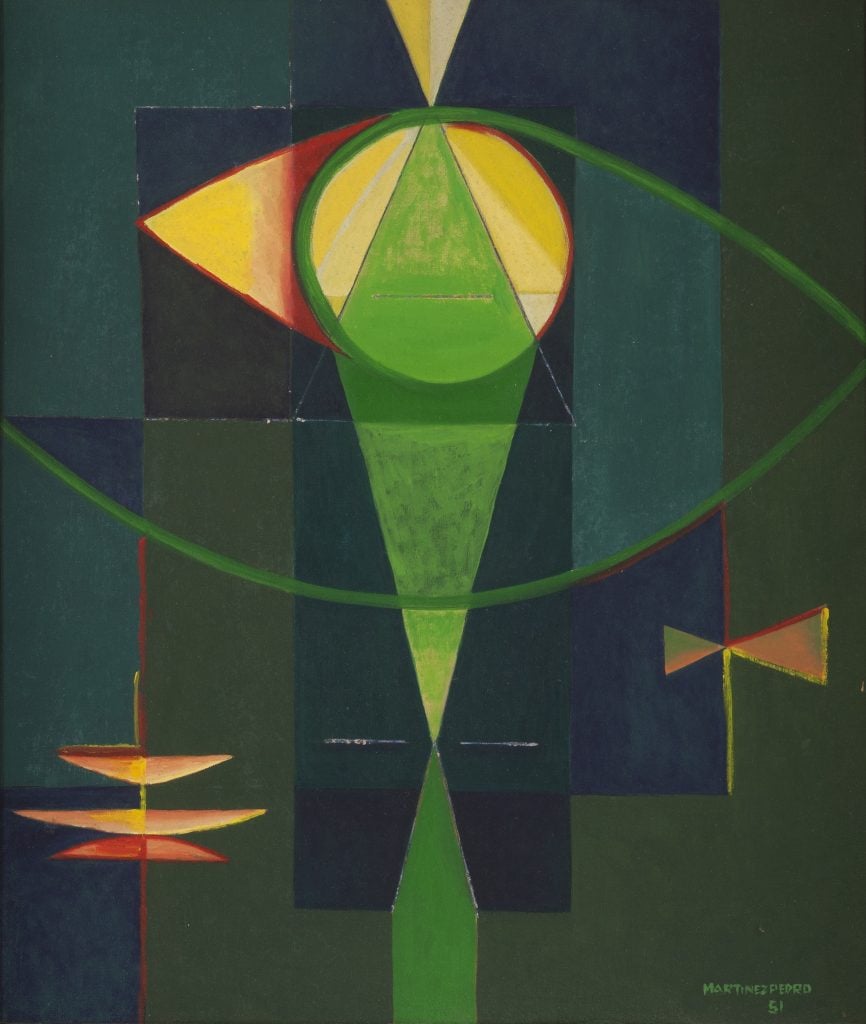
Luis Martínez Pedro, Untitled (1951). This work will be live for bidding September 22 in All in Americas on Artnet Auctions (est. $10,000–$15,000).
CGC: Gestural abstractions by Los Once and Concrete works by Los Diez have become highly sought-after by a new international generation of collectors and institutions. Can you give a brief overview of these two groups and talk about their importance?
RCA: At the onset of the 1950s, a reinvention of the fine arts took place in Cuba. For the first time, Cuban art was fully in tune with the international currents of abstraction, both from Paris and the so-called New York School. The preceding Modernist movement of Cuba, which clung to figurative painting, was displaced by this consuming abstract movement, although some masters of the previous avant-garde, such as Mariano Rodríguez and René Portocarrero, also participated.
This movement of artistic reinvention began in 1950 with Sandú Darié. He exhibited his “Estructuras pictóricas” (“Pictorial Structures”) at the Lyceum in Havana. This marked the beginning of his philosophical meditations or, as he would describe them, “investigations in abstractions of the picture-plane in space-time.” Darié transcended the Cuban and Latin American context of his work to become one of the leaders of the geometric avant-garde internationally and a recognized master in a universal sense. Other artists who adopted geometric painting early on in the first years of the 1950s were Mario Carreño and Luis Martínez Pedro; although both were great artists of this key movement, their abstract works have seldom appeared at auction.
Los Once (The Eleven) was initially composed of seven painters and four sculptors, all with diverse backgrounds and a variety of artistic training. Although these artists acted in a spirit of reinvention, as did the famed Los Diez (The Ten) Concretist group that followed, the work of Los Once carried a more combative, revolutionary spirit. Notably, a few significant figures of Los Once developed a strong interest in the Abstract Expressionism movement of the time, led by New York–based artists like Jackson Pollock; this preoccupation was reinforced by the departure of José Ignacio Bermúdez, a more traditional painter, from the group and the entry of Raúl Martínez, who had studied at the Chicago Design Institute.
The members of Los Once evolved over the years, but Antonio Vidal, Hugo Consuegra, Guido Llinás, Raúl Martínez and Tomás Oliva remained united. Undoubtedly, these five artists were the nucleus of Los Once, and therefore the most essential to understanding the subsequent artistic trajectory of the island. The Concrete artists of Los Diez and the expressionists of Los Once were fundamental to the reinvigoration of the Cuban artistic landscape, which contributed to Havana’s cosmopolitanism and the city’s establishment as an artistic leader in the Latin American context and beyond.
CGC: What do you think of the emergence of a market for these Modernist works abroad?
RCA: It is important to view the rediscovery of Cuban abstraction, and of Concrete art in particular, in context. The luminous first years of the 1960s produced an over-saturation of abstraction in the art world and market, which was followed by the same phenomena for pop art until it too was dethroned by New Figuration. This trajectory occurred not only in Cuba during this pivotal time, but also at the international level. Some of Los Once continued to explore abstraction, but the movement had faded from the forefront and lost its position as a focal point.
Pop art and New Figuration also fell out of popularity, and it was then the turn of the short-lived hyperrealism movement. Following these currents, the gaze of critics, curators, galleries, and auction houses was attuned toward the best of Cuban abstraction, which was no longer just a trendy apparition. It had been fully integrated into the art-historical canon as a movement worthy of study and respect. Through this redirection of attention, Concrete art was ‘rediscovered’ and finally appreciated for its quality. In the case of Cuban art, there came an international recognition of the superior production from artists belonging to Los Once and Los Diez. Therefore, I am not surprised by the emergence of strong interest for these artists, and instead view it as an act of historic recognition and social justice.
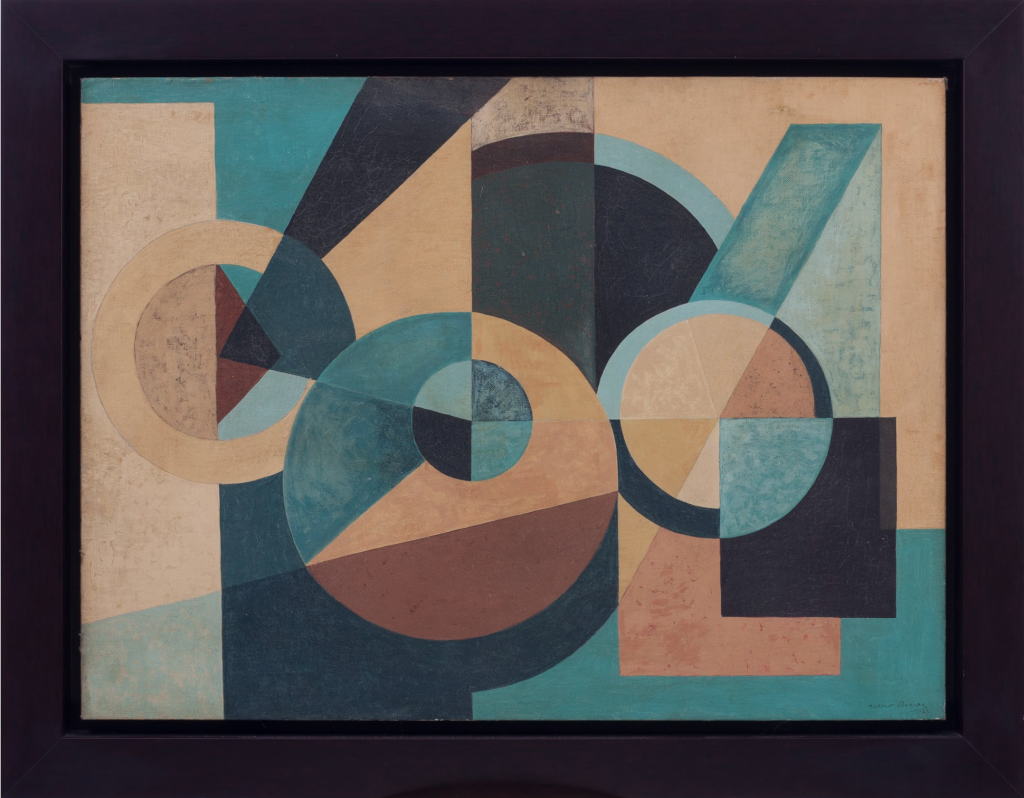
Pedro Alvarez, Formas #5 (1962). This work will be live for bidding September 22 in All in Americas on Artnet Auctions (est. $10,000–$14,000).
CGC: The works of Los Once and Los Diez are not only integral to our contemporary understanding of Cuban art, but also necessary to appreciate geometric abstraction as it was expressed around the globe. Can you speak to the influence of the Cuban abstract and Concrete movements and their conversion into an international visual language? And, since these works were rarely shown during the decades following their production, how did these artists come to have such a tremendous impact?
RCA: It is important to note that the works by Los Once and Los Diez did have a very visible circulation in Latin America in the 1950s. Sandú Darié exhibited with the Argentine group Madi, which came to have universal significance. Other Cuban artists, such as Luis Martínez Pedro, exhibited their Concrete abstractions at the São Paulo Biennial. In the second edition, Martínez Pedro won the Acquisition Prize for his work Jardín imaginario I and the UNESCO Prize for his Espacio azul. Mario Carreño exhibited in Caracas during the time the city was an international cultural epicenter. Furthermore, some of the most influential Cuban artists showed their first Concrete works in Paris, thereby establishing the movement abroad before taking it to new heights at home, especially Loló Soldevilla and Wifredo Arcay.
I found the disappearance of Los Once and Los Diez from the exhibition circuit more surprising than their current market resurgence. I see this renewed recognition and inclusion into the greater western art canon and market as well deserved and long overdue, precisely because the artists we are discussing were so internationally recognized in the 1950s. Many factors have influenced the rediscovery, which has been particularly visible since 2015. Through re-evaluations by art scholars, recent exhibitions in prestigious galleries and museums with rave reviews, and finally recognition by auction houses, the international art world and market have finally caught up. It has been a long journey to reach the impact you mentioned.
CGC: What do you believe is most important to understanding the work of Los Once and Los Diez? How should we view them, both in the context of their time and in our present?
RCA: I think the most interesting feature of their work is how these artists reinvented the artistic language of their time through avant-garde creations of the highest quality. Los Once and Los Diez erased from the map the nationalist assumptions of the so-called School of Havana, establishing new aesthetic codes and novel visual language. They were undoubtedly the new avant-garde of Cuban painting. The art of these groups maintains its significant historical standing today due to the unprecedented quality of their aesthetic proposal, which transcends time in its relevance and reaches today’s audience with the same freshness. The paintings of Los Once and Los Diez continue to amaze, not only for their formal mastery but also for their methodology, without which we cannot ever truly understand their art.
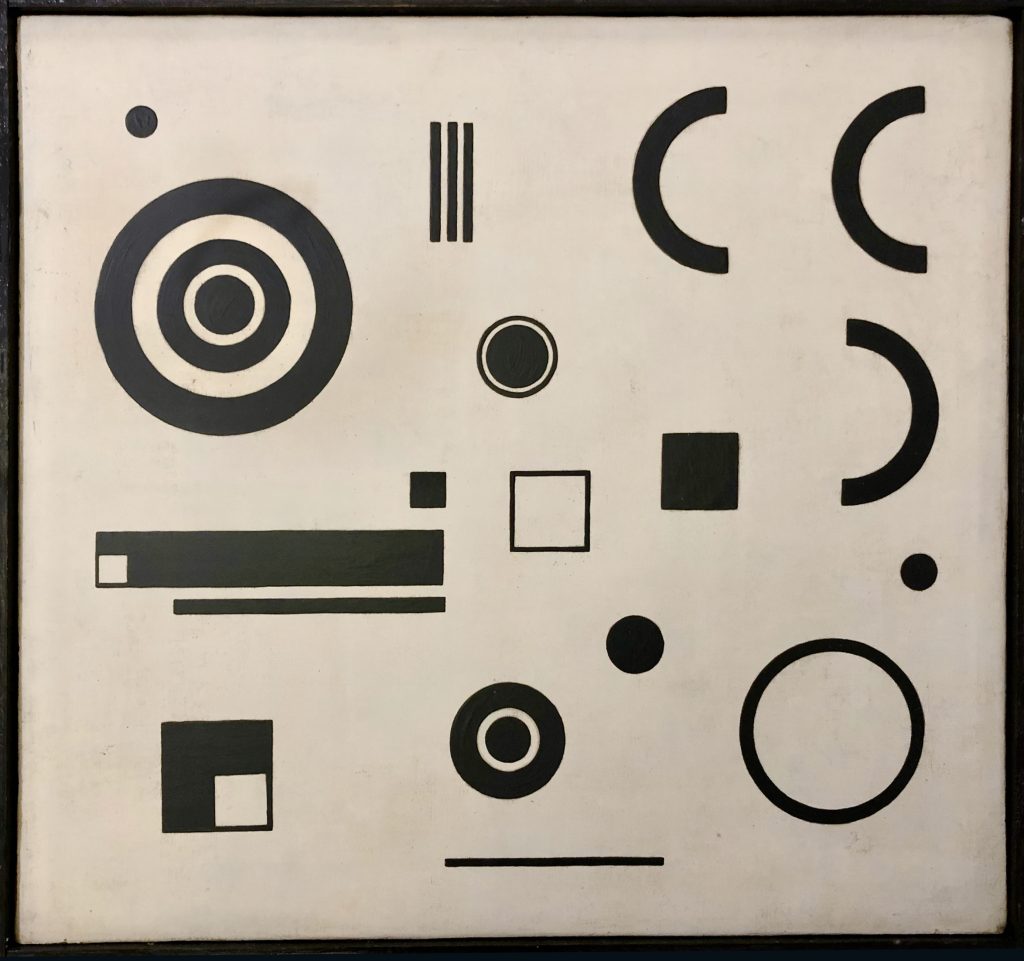
Loló Soldevilla, Untitled (1950). This work will be live for bidding September 22 in All in Americas on Artnet Auctions (est. $20,000–$30,000).
CGC: Lately in the U.S. and other countries, the most prominent Cuban women artists of the day, Carmen Herrera, Zilia Sánchez, and Loló Soldevilla, are receiving a great deal of attention. Why is that?
RCA: Carmen Herrera, Zilia Sánchez, and Loló Soldevilla are three extraordinary artists who are highly admired in Cuba. I think there was a time when they were not paid the attention their mastery was due. In the case of Carmen Herrera, when she moved to New York, her geometric abstraction had no audience since at that time Abstract Expressionism reigned supreme, and she only obtained recognition later in life. Despite being a top-flight artist, she only sold her first work in 2004, when she was 89 years old. I am of the mind that reaching this level at any age is a triumph; however, it is important to also recognize that this upward spiral of success has been long overdue. I believe the strength of these three artists in the global arena is thanks in part to the unstoppable power of the international feminist movement, particularly in the United States.
All three artists exhibited in Havana in the 1950s and were considered prominent figures. Due to the caliber and qualities of her work, Sánchez should have been recognized as part of Los Once. Unfortunately, the Cuban artistic tradition of the time did not favor the insertion of a woman into the narrative of the groups forming these major artistic movements.
Loló (as she is widely known) was a champion of Concretism since her time in Paris in the early 1950s. There she exhibited with celebrated figures such as Jesús Rafael Soto, William Klein, and María Martorell, among others. She showed a series of illuminated reliefs in the seventh Salon des Réalités Nouvelles at the Museum of Modern Art de la Ville de Paris in 1952. By the time she returned to Cuba, Loló’s work had already reached a spectacular maturity and caliber all her own. In addition to her own artistic accomplishments, Loló was an extraordinary promoter of both international and national abstract art—she made it her mission to make this aesthetic known to the Cuban public. To this end, she organized the 1956 exhibition “Pintura de Hoy. Vanguardia de la Escuela de París” in the brand new Palace of Fine Arts in Havana. Works by 46 European artists—Arp, Dewasne, Bloc, Pillet, and Vasarely, among others—were presented alongside the Cuban Concrete masters of the time: Sandú Darié, Wifredo Arcay, and Loló herself. Now legendary, this landmark exhibition was nearly forgotten by time.
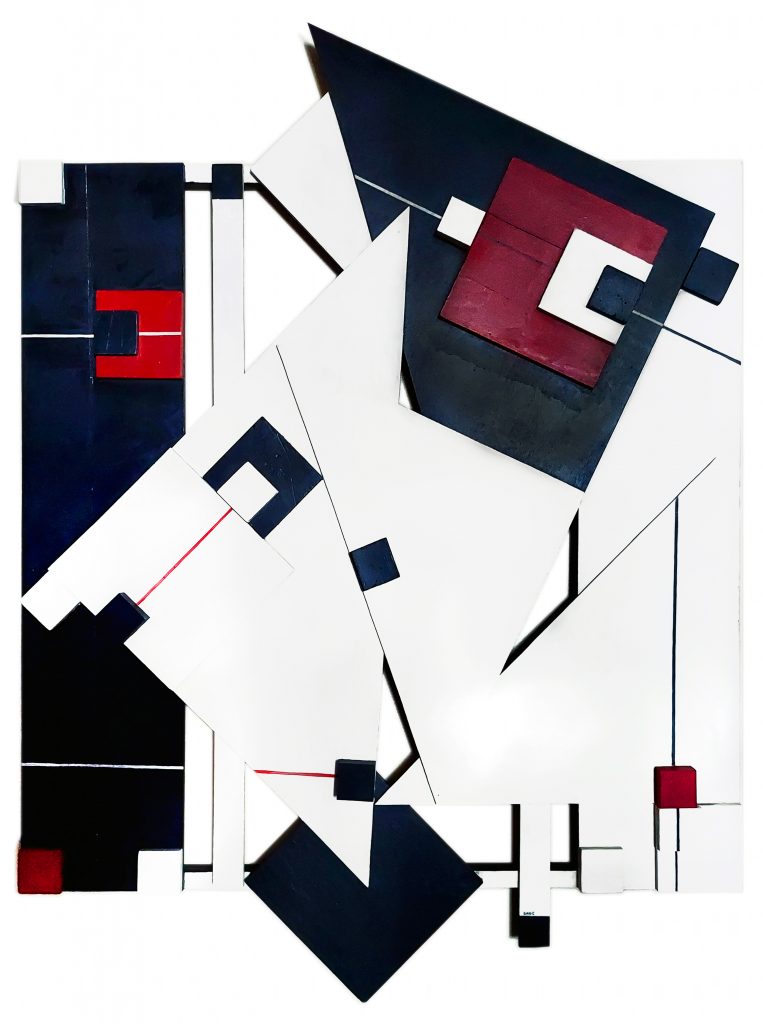
Sandú Darié, Dinamismo espacial (ca. 1950). This work will be live for bidding September 22 in All in Americas on Artnet Auctions (est. $25,000–$35,000).
CGC: When collecting Latin American art, some are wary of authenticity. We are honored here at Artnet to share with our collectors an incredible selection of Cuban works certified by you. I personally view provenance with total confidence when I see your name. What is your authentication process? What should collectors looking to acquire Cuban works look for? How should they train their eyes?
RCA: The certification process is arduous and at times very complex. In my particular case, it is backed by almost 40 years of viewing the fantastic collection at the National Museum of Fine Arts in Havana. And I’m not referring to iconic paintings by the masters of Cuban art found in the permanent installations—it is necessary to immerse oneself in the art storage facilities and the print collection, which is where one really learns the creative methods of a painter.
Let’s start at the beginning of my certification process. First, it is necessary to have direct access to the work in order to authenticate. There is no substitute for a physical examination of the work. Even a high-resolution photo can give the wrong impression. Once I am in front of the work, I resort to my critical expertise and my knowledge of the artist and his or her body of work: the manner of the brushstroke, the craquelure typical of medium and age, the signature, the examination of the supports to determine the possible execution date, etcetera. In some cases, it is necessary to consult an expert restorer to determine if there are overlapping layers of paint. This process takes time and in-depth study; it is never taken lightly, which I think the current and future collectors of these works truly appreciate.
To inquire about any of the works illustrated above, email CJ Greenhill Caldera at [email protected].
Que factores han influenciado a que el modernismo cubano sea tan innovador? Experto de arte cubano Curador Roberto Cobas Amate habla sobre este mercado que está en una etapa de expansión rápida
Conocidos en su día pero olvidados por la historia, los artistas de Los Once y Los Diez por fin logran el reconocimiento que merecen
Con una nueva ola de presentaciones en museos y textos académicos en todo el mundo, los grupos modernistas cubanos conocidos como Los Once y Los Diez están en la cúspide de un nuevo renacer. Sus principales líderes, Wifredo Arcay, Salvador Corratgé, Sandú Darié y Loló Soldevilla, pasaron un tiempo en Europa durante el apogeo de la innovación modernista; las filosofías y estéticas que los inspiraron se remontan al neoplasticismo, constructivismo, suprematismo y postcubismo. Recientemente, las instituciones han estado buscando piezas de artistas de estos movimientos, y la selección curatorial también ha alertado a los coleccionistas, con compradores en todo el mundo motivados a adquirir obras de los artistas de Los Once y Los Diez. Reconociendo el momento, Artnet ofrecerá una selección de obras maestras cubanas durante All in Americas, una subasta que celebra el continente americano, que se inaugura el 22 de septiembre.
La procedencia y la documentación sólida son particularmente vitales para los coleccionistas que adquieren el modernismo cubano, porque la literatura limitada y la escasez de expertos que puedan confirmar la autenticidad hacen que encontrar obras con credenciales sobresalientes sea un verdadero logro. All in Americas brinda una oportunidad incomparable de acceso a obras de arte cubano importantes y autenticadas.
Antes de la subasta, la especialista de Artnet Auctions, CJ Greenhill Caldera, habló con Roberto Cobas Amate, el renombrado crítico de arte, ensayista, y curador de la colección de vanguardia cubana en el Museo Nacional de Bellas Artes de La Habana en Cuba. Su nombre resuena no solo en la firma de sus textos seminales sobre Los Once y Los Diez, sino también en su papel como el principal autenticador de las obras cubanas de la época, incluidas en nuestra próxima subasta.
La subasta All in Americas comienza el 22 de septiembre; haga clic aquí para consignar obras de su colección y haga clic aquí para regístrese para licitar aquí.
CGC: Las obras de Los Once y Los Diez se han convertido en las obras más solicitadas por una nueva generación internacional de coleccionistas e instituciones. ¿Puede dar una breve descripción de ellos y hablar sobre su importancia?
RCA: A inicios de los años cincuenta tiene lugar en Cuba una renovación de las artes plásticas. Por primera vez el arte cubano se pone en plena sintonía con las corrientes internacionales de la abstracción, tanto las que provienen de París como de la llamada Escuela de Nueva York. El movimiento modernista anterior, aferrado a la pintura figurativa y a la búsqueda de una identidad nacional es desplazada por este movimiento abstracto arrasador, al cual trata de incorporarse algunos maestros de la anterior vanguardia como Mariano Rodríguez y René Portocarrero.
Este movimiento renovador se inicia en 1950 cuando Sandu Darie exhibe sus Estructuras pictóricas en el Lyceum de La Habana en las cuales comienza sus meditaciones filosóficas o como él las llamaría “especulaciones sobre abstracciones del forma-cuadro en el espacio-tiempo”. Darie es un artista universal, que trasciende el contexto cubano y latinoamericano para insertarse en el mejor arte internacional. Otros artistas que abrazan la pintura geométrica en fecha temprana de los años cincuenta serán Mario Carreño y Luis Martínez Pedro, excelentes artistas cuyas obras abstractas han aparecido en subasta esporádicamente y merecen más atención.
En el caso de Los Once, el grupo estuvo formado inicialmente por 7 pintores y cuatro escultores, de variada formación plástica pero siempre con un espíritu renovador y más combativo que los pintores concretos. En algunos de ellos estaba presente el interés por el expresionismo abstracto, lo cual se verá reforzado con la salida del grupo de José Ignacio Bermúdez, un pintor más tradicional, y el ingreso de Raúl Martínez, quien había cursado estudios en el Instituto de Diseño de Chicago.
El grupo fue modificando sus integrantes en el transcurso de los años y decidieron mantenerse unidos Antonio Vidal, Hugo Consuegra, Guido Llinás, Raúl Martínez y Tomás Oliva. Sin dudas este fue el núcleo fundamental de los Once y los de mayor relevancia. Tanto los concretos cubanos como los expresionistas del grupo Los Once ayudan a oxigenar el ambiente artístico cubano y contribuyen al cosmopolitismo de la ciudad de La Habana como un referente en el contexto latinoamericano.
CGC: ¿Qué opinas de la aparición de un mercado para estas obras modernistas en el extranjero, especialmente la abstracción geométrica?
RCA: Es importante ubicar en contexto el redescubrimiento de la abstracción cubana y en particular del arte concreto. En el primer lustro de los años sesenta se había producido una saturación en el mercado del arte abstracto. Entonces se imponen el pop art y la nueva figuración. Esto ocurre no sólo en la Cuba de la época sino esencialmente a nivel internacional. Algunos artistas continúan explorando la abstracción pero ésta ha perdido su punto focal de atención.
Ahora bien, el pop y la nueva figuración también van a pasar de moda. Le toca su turno al hiperrealismo, que como corriente artística durará poco. Ya para ese entonces la mirada de críticos de arte, curadores, galerías y casas de subasta se dirigen de nuevo hacia lo mejor de la abstracción, que ya no es una corriente de moda. Se ha incorporado a la historia del arte como un movimiento que merece estudio y respeto. En tal dirección la pintura concreta es “redescubierta” y se aprecia que su calidad, en el caso de Cuba, era superior como grupo al de los pintores que militaban en Los Once. No estoy sorprendido por lo que ha sucedido. Es un acto de reconocimiento y justicia histórica.
CGC: Las obras de Los Once y Los Diez son ahora tan integrales no solo para nuestra comprensión contemporánea de arte cubano, sino también necesarias para apreciar los movimientos internacionales de la abstracción geométrica. ¿Puede hablar un poco de la influencia de este movimiento y su conversión en un lenguaje visual internacional? Asimismo, estas obras nunca se mostraron durante las décadas posteriores a su producción. ¿Cómo llegaron estos artistas y sus obras a tener un impacto tan tremendo?
RCA: Es importante destacar que estas obras tuvieron una circulación muy visible en la latinoamérica de los años cincuenta. Sandu Darie expuso con el grupo argentino Madi, que llegó a tener una trascendencia universal. Otros artistas cubanos exhibieron sus abstracciones concretas en la Bienal de Sao Paulo como es el caso de Luis Martínez Pedro. En la segunda edición de este evento gana el Premio de Adquisición por su obra Jardín imaginario I y el premio de la UNESCO por Espacio azul. Por su parte Mario Carreño exhibió en la culta Caracas. Por otra parte algunos de los artistas cubanos exhibieron sus primeras obras concretas en París, como parte de ese movimiento en su origen, tal es el caso de Loló Soldevilla y Wilfredo Arcay.
Creo que sorprende más su desaparición de los circuitos de exhibición en un momento dado de la historia que ahora su feliz reinserción en el mercado, muy merecido en mi opinión, ya que hablamos de artistas que tuvieron un reconocimiento internacional muy notable en los años cincuenta. Muchos factores incidieron en este rescate histórico: las valoraciones de los estudiosos del arte, las exposiciones en galerías y museos de prestigio, las críticas elogiosas, y finalmente su reconocimiento por las casas de subastas, o sea, del mercado internacional. Ha sido un largo recorrido para llegar al impacto que usted menciona.
CGC: ¿Qué cree que es más importante para comprender el trabajo de Los Once y Los Diez? ¿Cómo deberíamos verlos tanto en el contexto de su tiempo como en nuestro presente?
RCA: Creo que lo más interesante es como estos artistas renovaron el lenguaje artístico de su época y lo hicieron con la más alta calidad. Borraron del mapa los presupuestos nacionalistas de la llamada Escuela de La Habana, para establecer nuevos códigos estéticos de visualidad. Ellos resultaron sin dudas la nueva vanguardia de la pintura cubana. Su arte tiene plena validez en la actualidad por la calidad de su propuesta estética, que atraviesa todos los tiempos y llega al día de hoy con plena lozanía. Su pintura asombra ya que está basada no sólo en el magisterio de las formas sino en una metodología sin cuyo conocimiento nunca llegaremos a comprender a cabalidad su arte.
CGC: Ultimamente en Estados Unidos y otros países, Carmen Herrera, Zilia Sánchez y Loló Soldevilla, las destacadas artistas cubanas de la época están recibiendo mucha atención. ¿Por qué es ese el caso? Se que nuestros lectores están particularmente interesados en la obra de Loló Soldevilla y les encantaría saber más sobre ella desde su perspectiva.
RCA: Carmen Herrera, Zilia Sánchez y Loló Soldevilla son tres extraordinarias artistas muy admiradas en Cuba. Pienso que hubo una época en que no se le prestaba la atención que requería su magisterio. Es sorprendente que una figura de la estatura artística de Carmen Herrera obtuviera un reconocimiento a una edad muy avanzada. Siendo una artista de primer rango vende su primera obra en el año 2004, cuando contaba 89 años de edad. Soy de los que pienso que cualquier edad es válida para triunfar pero no obstante impresiona lo tardío que podemos considerar la espiral ascendente de su triunfo. Creo que el éxito de estas tres artistas en el ámbito internacional tiene que ver con el empuje indetenible del movimiento feminista internacional y en particular en los Estados Unidos.
Las tres artistas expusieron en La Habana en los años cincuenta y eran consideradas figuras destacadas. En el caso de Carmen Herrera al mudarse a Nueva York su abstracción geométrica no tuvo cabida ya que en ese entonces predominaba el expresionismo abstracto. En el caso de Zilia Sánchez merece subrayarse que ella debió integrar, por la calidad de su obra, el grupo Los Once, ya que por esa fecha ella venía realizando una obra muy destacada y cercana a sus presupuestos estéticos. Pero el contexto artístico cubano no favorecía la inserción de una mujer en los grupos que se movian en ese momento.
Loló Soldevilla es una figura relevante en el arte concreto desde su estancia en París a principios de los años cincuenta. Allí exhibió con figuras relevantes como Jesús Soto, William Klein, María Martorell y otros, y expuso una serie de relieves luminosos en el Séptimo Salón de las Nuevas Realidades en el Museo de Arte Moderno de la Villa de París en 1952. Es importante tener en cuenta estos inicios tan destacados de la artista porque cuando decide insertarse en el contexto cubano, su obra ya ha adquirido personalidad propia y tiene una alta calidad. A esto se une su interés como promotora por dar a conocer al público cubano lo mejor del arte abstracto internacional. En tal sentido organiza la exposición Pintura de Hoy. Vanguardia de la Escuela de París en el flamante Palacio de Bellas Artes de La Habana en 1956. Se presentan obras de cuarenta y seis artistas europeos entre los que se encontraba Arp, Dewasne, Bloc, Pillet, Vasarely, entre otros. También están incluidos los cubanos Sandu Darie, Wilfredo Arcay y la propia Loló. Este es un acontecimiento que perdurará en el tiempo.
CGC: Al coleccionar arte latinoamericano, algunos desconfían de la autenticidad. Nos sentimos honrados aquí en Artnet de compartir con nuestros coleccionistas una increible selección de obras cubanas certificadas por usted. Personalmente veo la procedencia con total confianza cuando veo su nombre. ¿Cuál es su proceso de autenticación? ¿Qué deben buscar los coleccionistas que buscan adquirir obras cubanas? ¿Cómo deberían entrenar su ojo?
RCA: El proceso de certificación es arduo y a veces muy complejo. En mi caso particular está avalado por casi cuarenta años viendo la fantástica colección de obras cubanas que tiene el Museo Nacional de Bellas Artes de La Habana. Y no me estoy refiriendo a los iconos de la pintura de la isla que se encuentran en las salas permanentes. Es necesario sumergirse en los almácenes y el gabinete de estampas, que es donde realmente se aprende los métodos creativos de un pintor.
Vamos al principio. Es insoslayable tener acceso directo a la obra que se quiere autenticar. Nada puede sustituir el examen físico. La mejor de las fotos puede resultar engañosa. Una foto en alta resolución nos puede dar una apreciación equivocada de la pieza. Ahora una vez que estamos frente a la obra es necesario recurrir al conocimiento previo que se tenga de ese autor: cómo es su pincelada, el tipo de craqueladuras que puede tener la pintura, el detalle de la firma, el examen del soporte para determinar la posible fecha de ejecución. En algunos casos es necesario acudir a un restaurador experto para determinar si existen capas superpuestas de la pintura. Esto puede llevar un tiempo de estudio, que no es posible determinar a la ligera. Pienso que el futuro coleccionista lo agradecerá.
Para consultas sobre cualquiera de las obras ilustradas o para consignar a la próxima subasta All in Americas, envíe un correo electrónico a CJ Greenhill Caldera a [email protected].